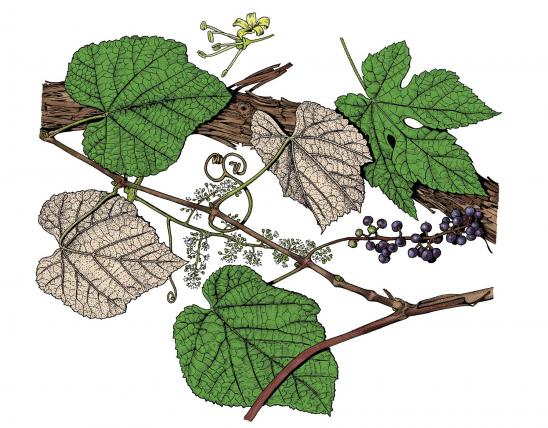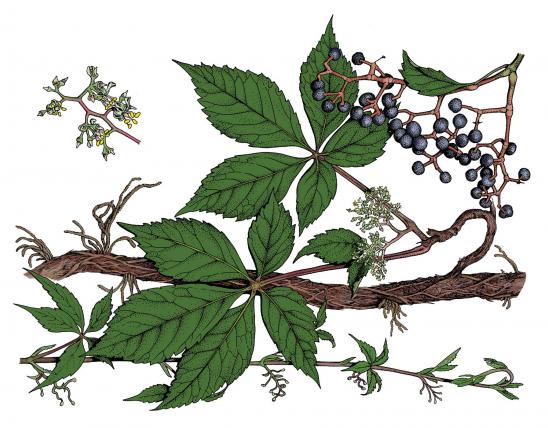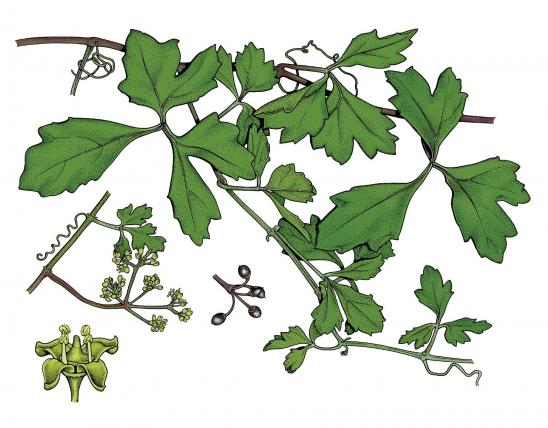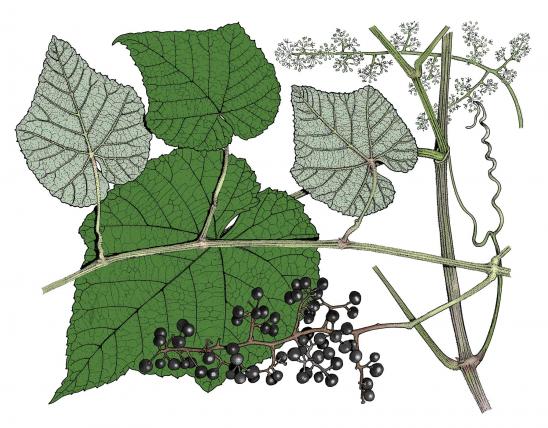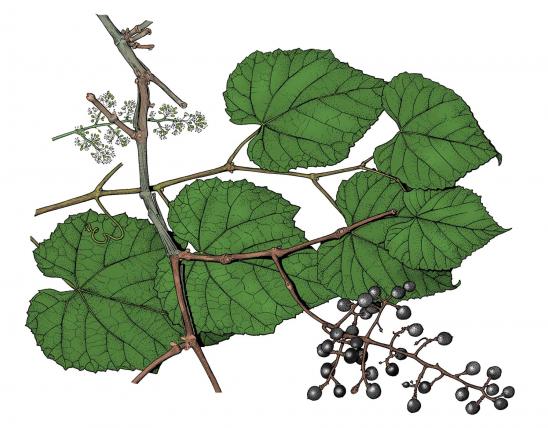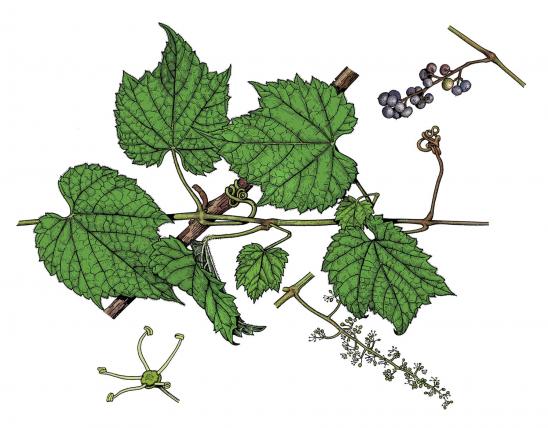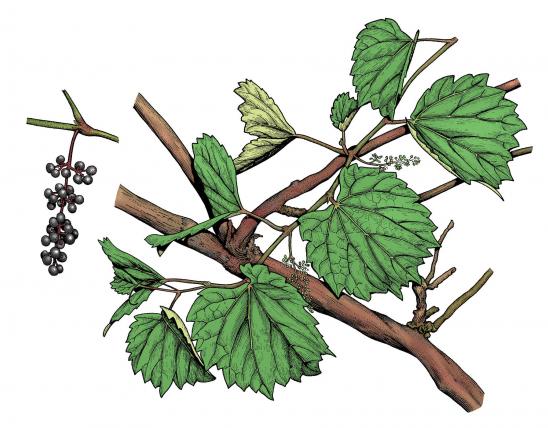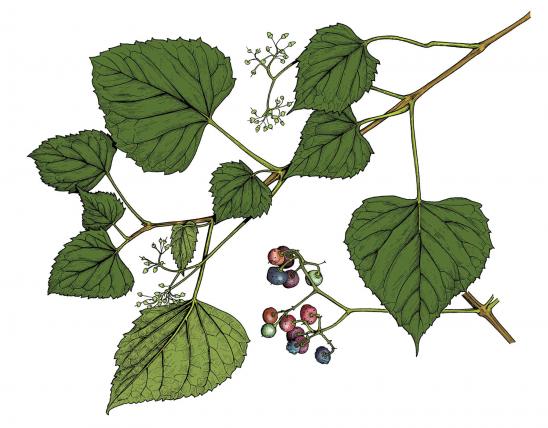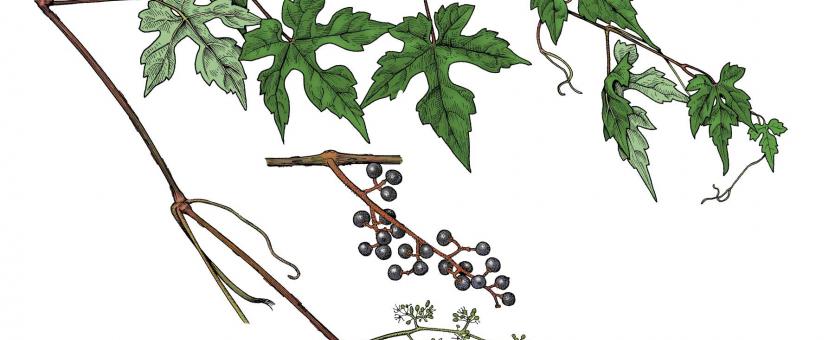
Red grape is an attractive, high-climbing, slender, delicate vine named for the color of its branches.
Leaves alternate, simple, 2¾–4¾ inches long and broad, heart-shaped or oval in general outline; margin with 3–5 prominent lobes, with rounded, U-shaped sinuses, teeth large and irregular; upper surface dark green, glossy; lower surface much paler green. Leaf blades of flowering or fruiting branches are smaller.
Stems of young growth are slender, grooved, tips naked or not leafy, thinly covered with whitish, cottony hairs. Mature stems are bright red or purplish red, finely striped, shiny, and smooth. Tendrils are strong; red when young. Bark on old wood separates in wide, thin plates.
Flowering is in May–July. Flowers are yellowish green, minute petals 5, dropping early; male and female flowers in separate clusters on same plant; clusters 4–6 inches long, opposite a leaf on new stem growth.
Fruit matures in September–October. Fruit bluish-black berries, round, about ¼ inch thick, skin thick, pulp juicy and sweet. Seeds 1 or 2 per fruit and about ¼ inch long; they are largest of any species in proportion to the size of the berry.
Stems can reach 65 feet or more in length.
Scattered in eastern Missouri, mostly in counties adjacent to the Mississippi and Missouri rivers, with sporadic occurrences farther west.
Habitat and Conservation
Occurs in bottomland forests, swamps, sloughs, banks of streams and rivers, and edges of ponds and lakes.
Human Connections
The attractive leaves and slender, delicate stems make red grape a good ornamental candidate for trellis or arbor.
The grapes may not be the most flavorful, but they can be made into jelly.
Ecosystem Connections
The fruit is eaten by many species of birds and mammals, including catbird, cardinal, bobwhite, ruffed grouse, wild turkey, raccoon, red fox, and deer.
The foliage is browsed by deer, the tendrils eaten by wild turkey.
The catbird, mockingbird, brown thrasher, and cardinal use the long strips of bark in the middle layer of their nests.
Several species of sphinx moths use grape-family species as larval food plants.
























